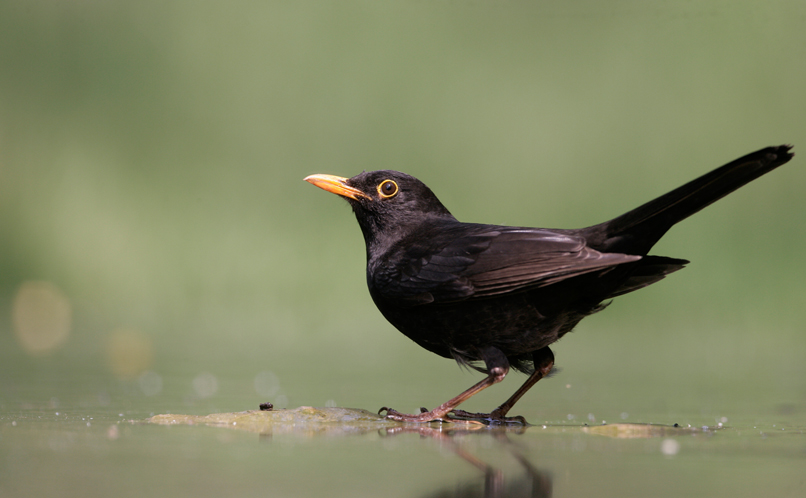
Blackbird Turdus merula
One of our most familiar visitors, the blackbird is hard to miss. The bright yellow bill, the beady eye and the deep black plumage of the male make it a truly unmistakable visitor to your garden. Part of the thrush family, you’ll see blackbirds all across the British Isles, in both urban, suburban and rural areas.
Identification
The male blackbird is unmistakable, however the female simply doesn’t live up to her name! Similar in shape, but with an all brown plumage, the female blackbird also has light streaking on the throat and breast.
Both the male and female have a varied melody, that is often slow, and never repeats.
Feeding
In the spring and summer, blackbirds feed mainly on insects, making mealworms a great feed. When autumn and winter roll around, a blackbird will try and eat fruit, making berry suet pellets and fat balls a good replacement source of energy.
Breeding
The blackbird breeds from March to August, and builds an untidy nest often lined with mud. Lays 3-5 pale green eggs, which then incubate for 12-15 days, with the little tikes taking a further 12-15 days to fledge. Because blackbirds are such vociferous breeders, the female will often lay new eggs while the male is still feeding the young from a previous brood!
Did you know?
The busy blackbirds can raise up to five broods in a single season!
Often mistaken with...
The female blackbird is often mistaken for the everyday thrush, while albinism is common, meaning that the blackbird can often go white!
Perfect for the Blackbird...
3 Options From £5.95
High Energy Premium Fat Balls (90g)
3 Options From £10.95
High Energy Berry Suet Pellets
3 Options From £10.95





